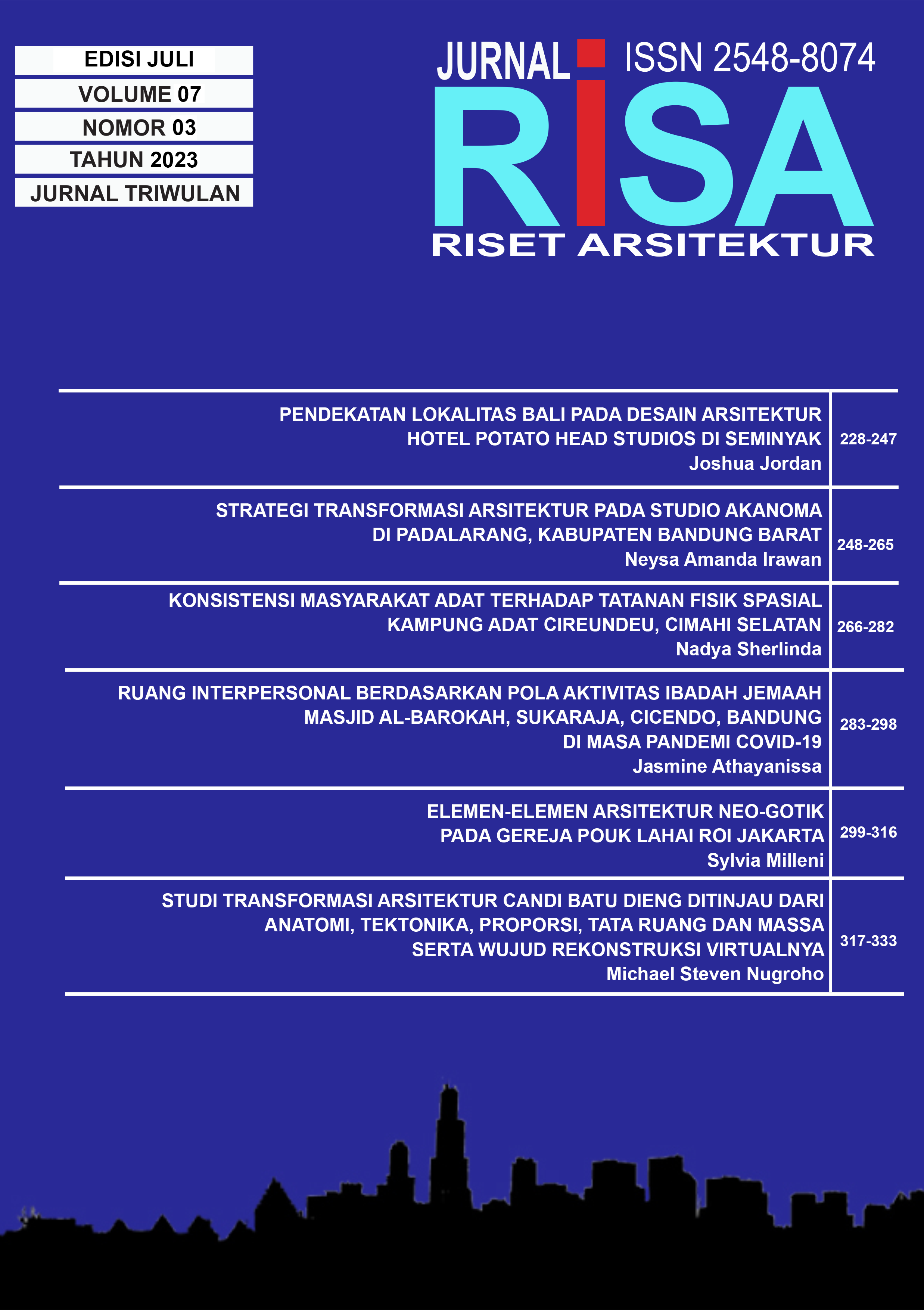LOCAL BALINESE APPROACH TO THE ARCHITECTURAL DESIGN OF POTATO HEAD STUDIOS HOTEL IN SEMINYAK
DOI:
https://doi.org/10.26593/risa.v7i03.6997.228-247Abstract
Abstract - Globalization is a phenomenon that is difficult to avoid, and its effects are also felt in the field of architecture. As time passed by, more architectural works in Indonesia are built very modern and the locality approach is starting to be forgotten, especially in design. As a result, Indonesian architectural works began to lose their real context and identity. The purpose of this study is to uncover the local Balinese approach applied by Office for Metropolitan Architecture (OMA), in the architectural design of the Potato Head Studios hotel in Seminyak, Bali. The research was conducted using qualitative methods in the form of description, comparison, analysis and interpretation. The theories used are the principle of Balinese locality and the theory of the design approach on historical approaches, historicism, study of precedents and materials. The supporting theories are the Ordering Principles and the theory of Good Building / Architecture. The case study is divided into the scope of the surrounding environment, the site, the form, the figure and its sustainability.
The results show that the Balinese locality approach to the architectural design of this hotel as a whole was dominated by the concept of harmony with nature and the approach to materials. The use of materials involves local craftsmen applying aspects of material sustainability in the building process and using recycled materials to create an interesting creation of shapes and textures on the wall, ceiling and floor elements. In addition, the historical approach of Balinese philosophy and culture is shown by the application of the sanga mandala concept to the shape of the building mass, and the use of the ancient Tika calendar which translates into a breeze block facade. From the concept of Balinese architecture, it can be seen that there is the application of natah as a form OHof the rwabhineda concept and also the woven elements on the ceiling, facade and railing of the building. A precedent study approach was also carried out at this hotel so as to create an architectural design that was different from the surrounding inns. The benefits of this research include providing an understanding to readers and designers regarding the local Balinese approach used in the this hotel and becoming a design inspiration. As a suggestion, the Balinese locality approach from the architectural concept can be applied further to the site and shape of the building mass. The pattern of the Tika calendar can also be simplified to make it easier to identify.
Keywords: design approach, locality, architectural design, Bali
Additional Files
Published
Issue
Section
License
Copyright (c) 2023 Joshua Jordan

This work is licensed under a Creative Commons Attribution-NonCommercial-ShareAlike 4.0 International License.












